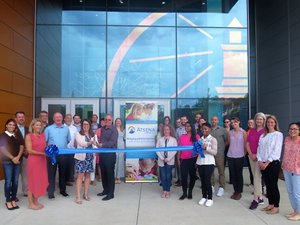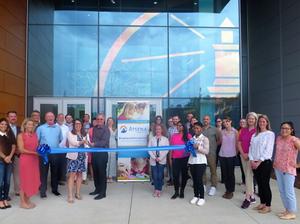
A Durham biotech is raising millions to advance its gene therapy programs targeting diseases that cause blindness. But it's doing so with a smaller workforce.
Atsena Therapeutics has raised about $24.5 million from 10 investors and is looking to raise more, according to an Oct. 2 filing with the U.S. Securities and Exchange Commission. The company set a total offering amount for the raise at $32 million.
The company confirmed in an email to Triangle Business Journal that it has closed an insider-led Series B round. Atsena CEO Patrick Ritschel said that Atsena is "in ongoing discussions with potential additional investors."
This Series B round, plus a reduction in its workforce, will extend Atsena's runway and enable the biotech to achieve topline results in an ongoing phase 1/2 clinical trial, Ritschel said. The company declined to share details of its workforce reduction, which Ritschel said prioritizes company resources toward a program called ATSN-201. Atsena is targeting X-linked retinoschisis, a disease with no approved treatments that causes progressive vision loss.
As of July 2022, Atsena had about 35 full-time employees and had moved into a facility with 20,000-square-feet of laboratory and office space in the Alexandria Center for Advanced Technologies off Davis Drive.
This is Atsena's first raise in about three years. The company in April 2020 closed a roughly $8.2 million round led by founding investors Hatteras Venture Partners, a Durham-based firm, and the venture arm of Foundation Fighting Blindness, called the Retinal Degeneration Fund.
Atsena followed this initial funding round with a $55 million Series A round in late 2020 that was led by Sofinnova Investments with participation from Abingworth and Lightstone Ventures. Hatteras and the RD Fund also participated in this round.
In late August, Atsena began dosing patients in this clinical study targeting X-linked retinoschisis, or XLRS. The company is enrolling male patients between the ages of 6 and 64 as the disease primarily affects males and is typically diagnosed in early childhood. About 30,000 males in the U.S. and Europe have XLRS, Atsena said.
In addition to moving forward with this study, Atsena plans to report 12-month data by the end of the year from a phase 1/2 clinical trial of another gene therapy program, ATSN-101, Ritschel said. Atsena is also advancing preclinical studies that could support an investigational new drug application with the U.S. Food and Drug Administration, paving the way for the biotech to move a third program into the clinic.


